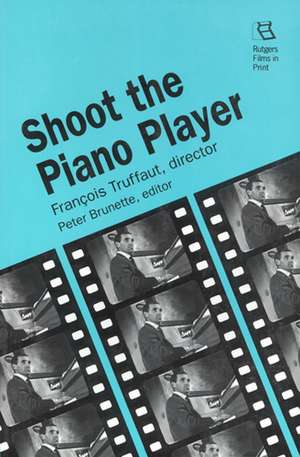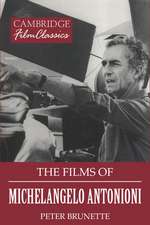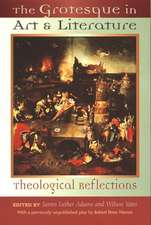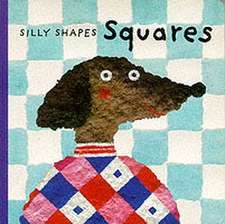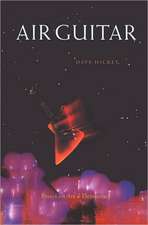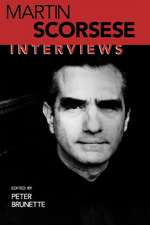Shoot the Piano Player: Francois Truffaut, Director
Editat de Peter Brunetteen Limba Engleză Paperback – mai 1993
When it appeared in 1960, the inspired fun of François Truffaut's Shoot the Piano Player shocked and delighted critics and audiences around the world. Its sudden shifts of tone and mood, its willful play with genre stereotypes, and its hilarious in-jokes clearly signaled that Jean-Luc Godard's equally innovative Breathless was not a fluke. The two films heralded the arrival of the so-called New Wave, sharing with other New Wave films an insistence on low-budget, location shooting and, above all, on cinema as the personal statement of an author. These films had a tremendous impact on all filmmaking.
Peter Brunette's introduction to this book gives us new insight into the film, based in part on revisualizing it in terms of recent postmodern and poststructuralist thinking. He argues, in effect, that Truffaut was one of the directors who paved the way for a postmodern aesthetic. The volume also contains a complete and accurate continuity script of the film (based on the authoritative, wide-screen version), a series of interviews with Truffaut (including one by Hélène Laroche Davis, previously unpublished), a large number of reviews and essays, a filmography, and selected bibliography.
Peter Brunette's introduction to this book gives us new insight into the film, based in part on revisualizing it in terms of recent postmodern and poststructuralist thinking. He argues, in effect, that Truffaut was one of the directors who paved the way for a postmodern aesthetic. The volume also contains a complete and accurate continuity script of the film (based on the authoritative, wide-screen version), a series of interviews with Truffaut (including one by Hélène Laroche Davis, previously unpublished), a large number of reviews and essays, a filmography, and selected bibliography.
Preț: 309.24 lei
Nou
Puncte Express: 464
Preț estimativ în valută:
59.18€ • 63.28$ • 49.34£
59.18€ • 63.28$ • 49.34£
Carte tipărită la comandă
Livrare economică 17 aprilie-01 mai
Preluare comenzi: 021 569.72.76
Specificații
ISBN-13: 9780813519425
ISBN-10: 081351942X
Pagini: 272
Dimensiuni: 152 x 229 x 20 mm
Greutate: 0.4 kg
Ediția:None
Editura: Rutgers University Press
Colecția Rutgers University Press
ISBN-10: 081351942X
Pagini: 272
Dimensiuni: 152 x 229 x 20 mm
Greutate: 0.4 kg
Ediția:None
Editura: Rutgers University Press
Colecția Rutgers University Press
Notă biografică
Peter Brunette is Professor of English and Film Studies at George Mason University. He is the author of Roberto Rossellini and co-author of Screen/Play: Derrida and Film Theory .
Deceased 2010
Deceased 2010
Cuprins
Introduction -
Shoot the Piano Player as a postmodernist text / Peter Brunette
Fraṅois Truffaut : A Biographical Sketch
Shoot the Piano Player -
Credits and cast
The continuity script
Notes on the continuity script
Interviews, Reviews, and Commentaries -
Interviews :
Interview with Fraṅois Truffaut / Ȟl̈ne Laroche Davis
I wanted to treat Shoot the Piano Player like a tale by Perrault : An interview with Fraṅois Truffaut / Yvonne Baby
Adapting Shooting the Piano Player / Fraṅois Truffaut
Should films be politically committed? / Fraṅois Truffaut
From an interview with Fraṅois Truffaut
Reviews :
Ciňma 60 / Alain Vargas
Ciňma 61 / Marcel Martin
The New Yorker / Edith Oliver
Variety / "Mosk"
Sight and Sound / Peter John Dyer
Film Culture / Pauline Kael
The Village Voice / Andrew Sarris
The New York Times / Bosley Crowther
Esquire / Dwight Macdonald
Commentaries :
Cinema of appearance / Gabriel Pearson and Eric Rhode
"Are women magic?" / Annette Insdorf
The existential play in Truffaut's early films / Allen Thiher
Truffaut, Godard, and the genre film as self-conscious art / Leo Braudy
The statement of genres / James Monaco
Tirez sur le Pianiste / C.G. Crisp
Tirez sur le Pianiste / Don Allen
The sensitive spot / Jean-Paul Ṯṟk
On Shoot the Piano Player / Graham Petrie
Through the looking glass / Roger Greenspun
The technique of Shoot the Piano Player / Karel Reisz and Gavin Miller
Filmography and Bibliography -
Truffaut Filmography, 1954-1983
Selected Bibliography
Shoot the Piano Player as a postmodernist text / Peter Brunette
Fraṅois Truffaut : A Biographical Sketch
Shoot the Piano Player -
Credits and cast
The continuity script
Notes on the continuity script
Interviews, Reviews, and Commentaries -
Interviews :
Interview with Fraṅois Truffaut / Ȟl̈ne Laroche Davis
I wanted to treat Shoot the Piano Player like a tale by Perrault : An interview with Fraṅois Truffaut / Yvonne Baby
Adapting Shooting the Piano Player / Fraṅois Truffaut
Should films be politically committed? / Fraṅois Truffaut
From an interview with Fraṅois Truffaut
Reviews :
Ciňma 60 / Alain Vargas
Ciňma 61 / Marcel Martin
The New Yorker / Edith Oliver
Variety / "Mosk"
Sight and Sound / Peter John Dyer
Film Culture / Pauline Kael
The Village Voice / Andrew Sarris
The New York Times / Bosley Crowther
Esquire / Dwight Macdonald
Commentaries :
Cinema of appearance / Gabriel Pearson and Eric Rhode
"Are women magic?" / Annette Insdorf
The existential play in Truffaut's early films / Allen Thiher
Truffaut, Godard, and the genre film as self-conscious art / Leo Braudy
The statement of genres / James Monaco
Tirez sur le Pianiste / C.G. Crisp
Tirez sur le Pianiste / Don Allen
The sensitive spot / Jean-Paul Ṯṟk
On Shoot the Piano Player / Graham Petrie
Through the looking glass / Roger Greenspun
The technique of Shoot the Piano Player / Karel Reisz and Gavin Miller
Filmography and Bibliography -
Truffaut Filmography, 1954-1983
Selected Bibliography
Descriere
When it appeared in 1960, the inspired fun of François Truffaut's Shoot the Piano Player shocked and delighted critics and audiences around the world. Its sudden shifts of tone and mood, its willful play with genre stereotypes, and its hilarious in-jokes clearly signaled that Jean-Luc Godard's equally innovative Breathless was not a fluke. The two films heralded the arrival of the so-called New Wave, sharing with other New Wave films an insistence on low-budget, location shooting and, above all, on cinema as the personal statement of an author. These films had a tremendous impact on all filmmaking.
